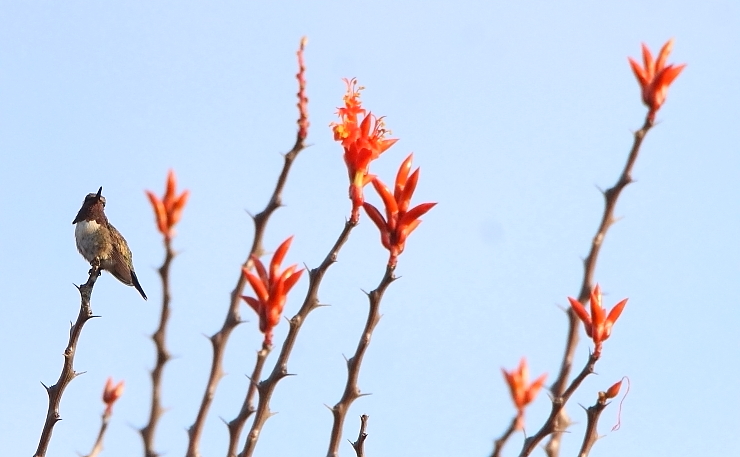
Working man that I still am, I can not yet spend every day of January trying to build my new year list of species. So I pick each outing for maximum effect. Having already done Lake Cuitzeo’s waterfowl and shorebird area, and Las Mesas’ unique combination of highland habitats, week 3 meant it was a time to head downhill and see the lowland specialties of Paso Ancho. An added bonus was that January temperatures make a Hot Country outing much more pleasant.
Paso Ancho is a wonderful site for seeing all sorts of Mexican endemics, and its tropical climate seems to favor birds with colorful plumage. But in winter, one of its major species is a migrant with a wonderfully quirky name: the Lucifer Hummingbird. No one seems to know how this hummer got its odd name. It was named, not by some little-known 18th-century ornithologist named Jeremiah Lucifer, but by the English naturalist William John Swainson. (As far as I can tell, Swainson never visited Mexico. There must be a story there, somewhere.)
Perhaps the Lucifer Hummingbird got its name because Swainson made a Faustian bargain?
At any rate, Lucifer Hummingbirds are all around in Paso Ancho during the winter, and while most guidebooks insist they feed largely on agaves, at this site they go mad for the flowers of Fouqueria formosa, “Palo Santo” (“holy stick”).
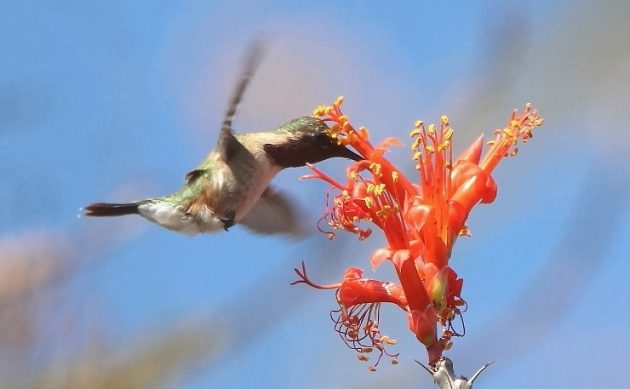
Look in any guidebook or birding app, and you will see male Lucifers sporting a beautiful purple gorget (throat). Of course, the reality of hummingbird optics is different, and in most of my photos the gorget looks black, as seen in the shot above. The image just below is as close as I have ever gotten to showing a full purple throat. And in the following shot, the throat appears… golden? Hummingbird feathers are weird.
Male Lucifers also sport a medium long, split tail, which you can just appreciate in the photo above.
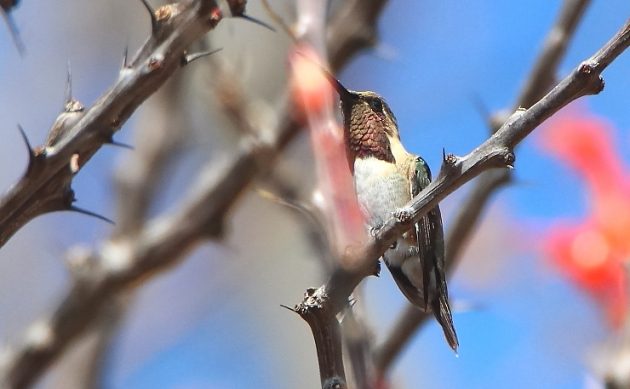
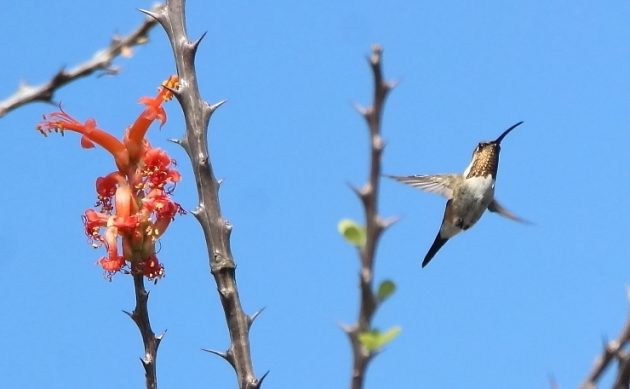
Still, the award for “best pose of the day” goes to a female Lucifer. She may look large in this image, but in reality, these birds are only four inches long. Note the curved bill, which is diagnostic for the Lucifer Hummingbird.
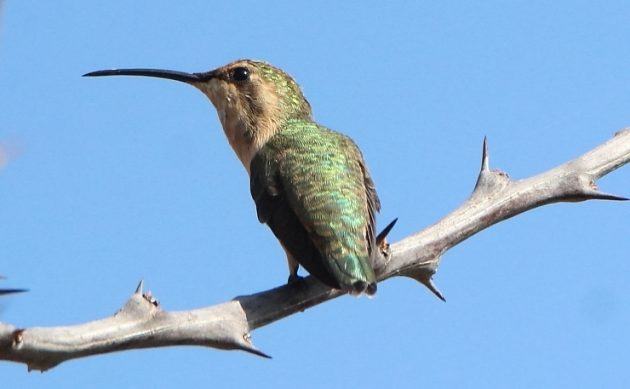
Lucifers aren’t the only hummers that enjoy those Palo Santo flowers. The endemic Dusky Hummingbird is also a big fan. The second photo below is the best I’ve ever managed of this rather drab species.
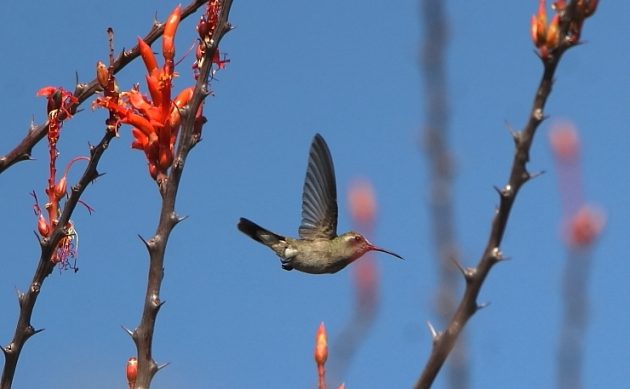
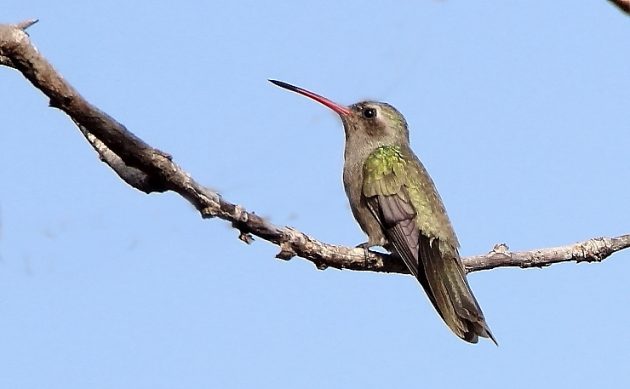
Another typical plant of this area is the local Ceiba, a member of the family of trees that produce the fiber known as kapok. It turns out that this fiber is good for more than filling pillows. It also works for padding the nests of Violet-crowned Hummingbirds.
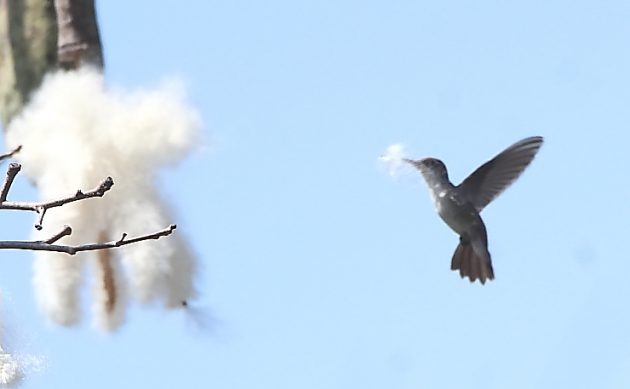
As I mentioned before, the dry, thorny forests of Paso Ancho and the Hot Country in general seem to attract very colorful birds. And none are more colorful than the Elegant Euphonia. Like many birds, males and females of this species have different plumage. But, unlike most such birds, these males and females are equally showy. And I do mean showy.
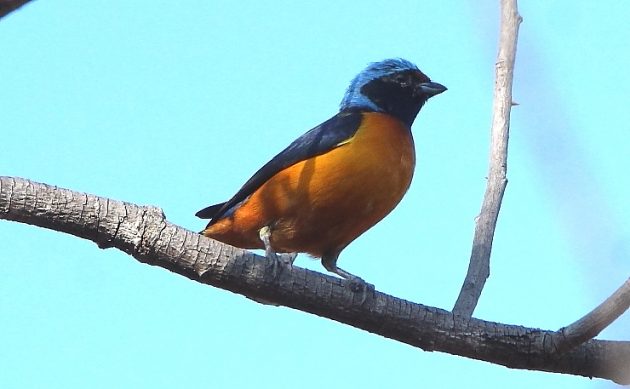
male Elegant Euphonia
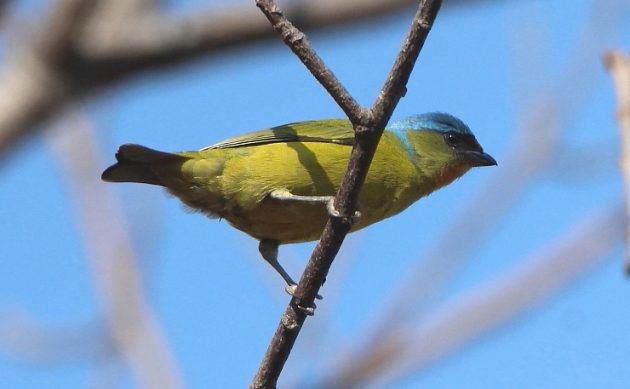
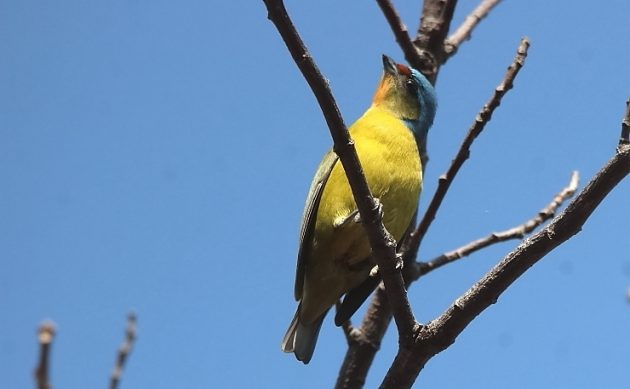
another female Elegant Euphonia
Elegant Euphonias are specialists, almost always seen where they can feed on ripe mistletoe fruits. This trip, I managed to photograph this behavior.
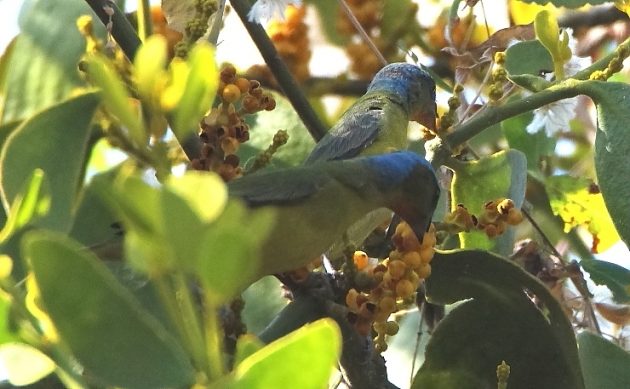
Of course, hummingbirds and euphonias aren’t the only beauties in the area. There were also Orange-breasted Buntings and one female Painted Bunting. But those stayed in the unphotographable shadows, so our consolation prize is this lovely male Varied Bunting.
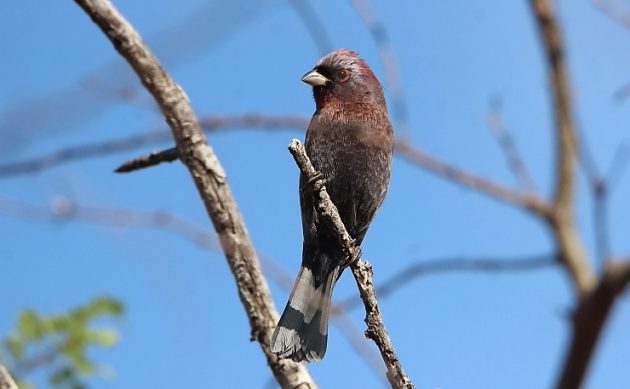
Once I moved to the south bank of the local river, I was pleased to see some more muted feathered friends. The Eastern Phoebe and Willow Flycatchers are not at all colorful, and are certainly common elsewhere. But here, they are among the most difficult-to-see of our local Tyrant Flycatchers.
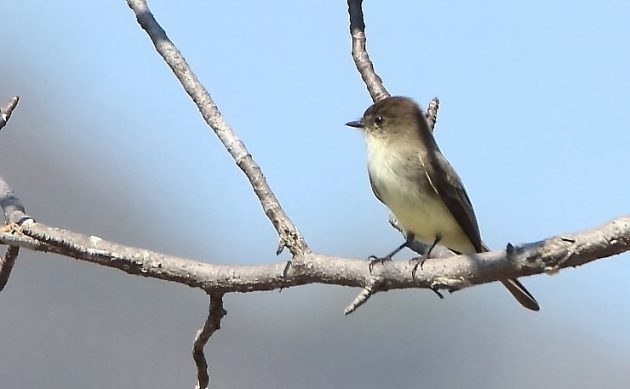
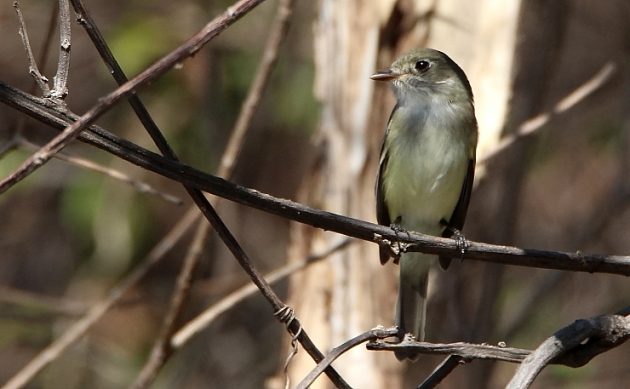
One of Paso Ancho’s signature species is the always amusing Gray-Cheeked Woodpecker. While I saw the one shown here in the early morning, it wasn’t until late in the day that I saw proof of these woodpeckers’ importance to the local ecosystem. Not only woodpeckers enjoy the nesting holes they produce; Black Iguanas also do.
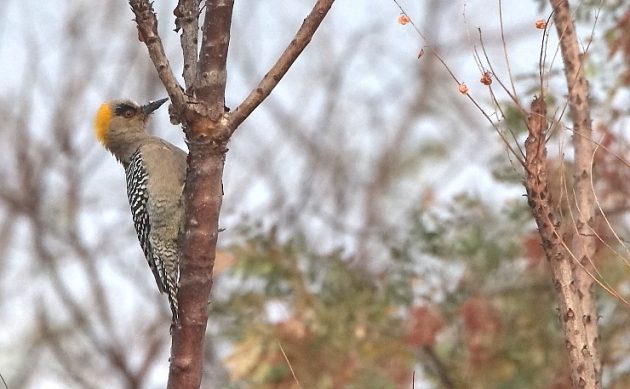
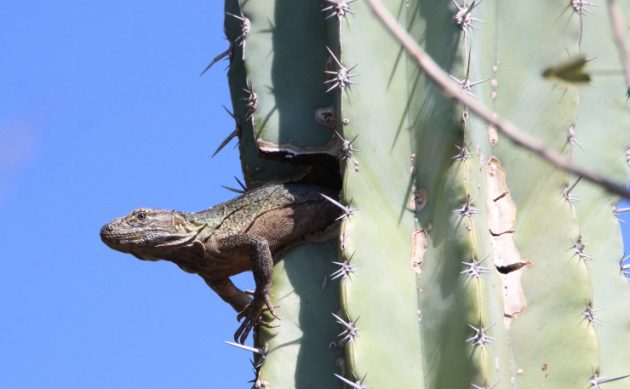
In the end, I dipped on a few local specialties: no Ferruginous Pygmy-Owls, Banded Wrens, or Russet-crowned Motmots. But the largest group of Banded Quail that I have ever seen (30+) made up for the missing Banded Wrens. And there were, as always, plenty of Stripe-headed and Black-chested Sparrows, Yellow-winged Caciques, Vaux’s Swifts, and Social Flycatchers to make the day worthwhile. A Laughing Falcon may have laughed at me, but I just laughed back.











Your photos are getting better and better, Paul! A bit sad there is no Jeremiah Lucifer though. If he existed, he certainly deserved a bird to be named for him.
Thanks, Kai. I’m trying…